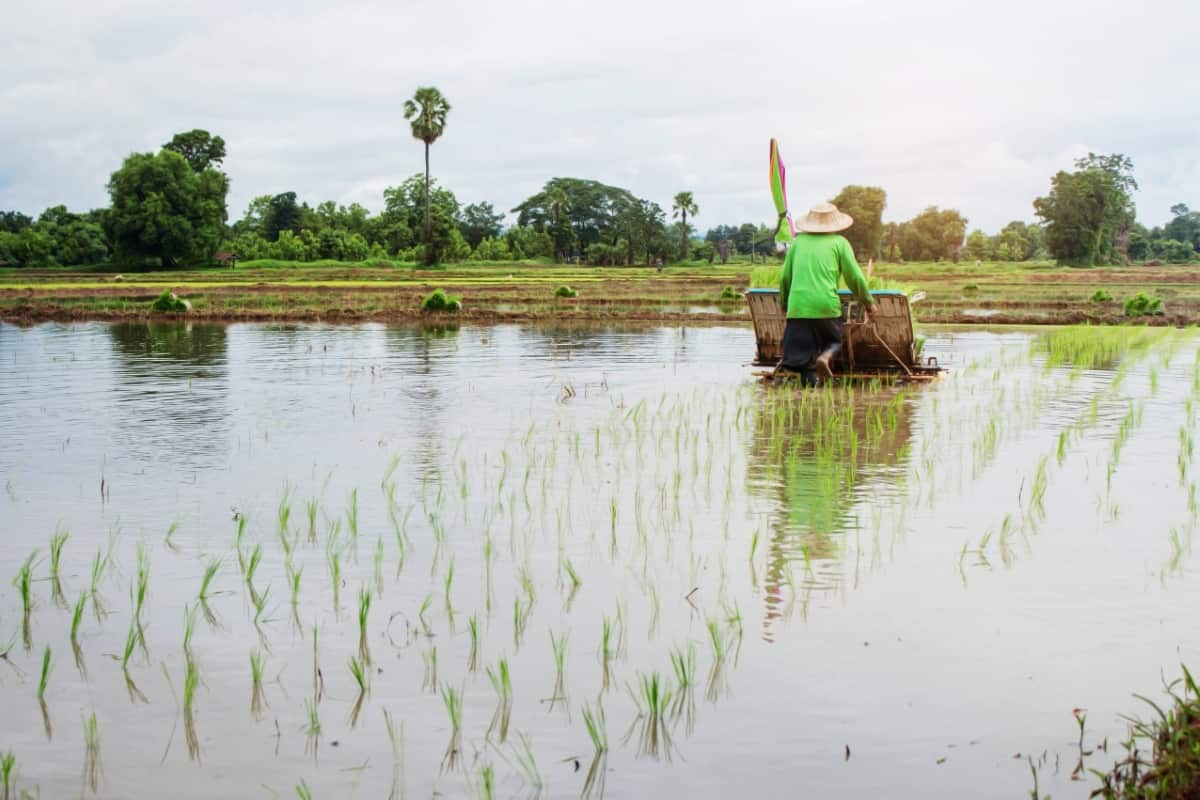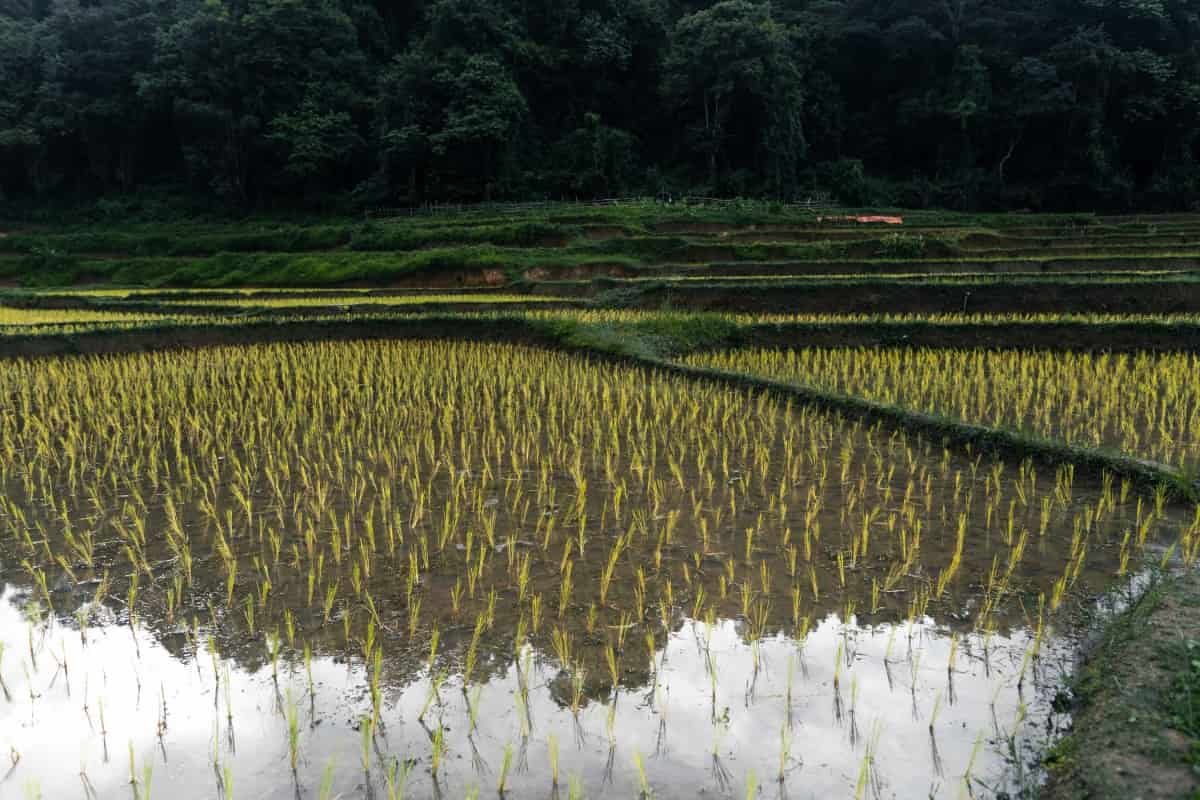Planting rice is a meticulous process that requires attention to detail at every stage. Each step contributes to a successful yield, from selecting the appropriate variety of seeds to understanding the ideal time for planting, effective water management, and employing modern or traditional methods. This guide provides an insightful look into the essential aspects of rice cultivation, promising a comprehensive understanding of the process.

How to Plant Rice
Understanding Rice Cultivation
- Soil Selection: The choice of soil is fundamental. Clayey soil that retains water well is ideal for growing rice.
- Seed Germination: Proper water levels and temperature must be maintained for the successful germination of rice seeds.
- Planting Methods: The cultivation methods may vary between traditional hand transplantation and modern machinery use.
- Water Management: Rice needs a lot of water, and managing this is pivotal to its growth.
Optimal Growing Conditions for Rice
- Climate: Rice thrives in warm, humid conditions, requiring temperatures between 70°F and 99°F (21°C and 37°C). It needs a minimum annual rainfall of 45 inches (115 cm) and prefers 69 to 118 inches (175 and 300 cm).
- Soil: Ideal soil for rice growing is rich, well-drained, and moisture-retentive, with a pH between 5 and 7.5. High clay and silt-content soils are suitable.
- Planting Process: Planting requires proper location, seed selection, soil preparation, and mechanized planting to ensure uniform spacing.
- Growing Methods: Different growing methods are wet, dry, upland, aerobic, System of Rice Intensification (SRI), and aquaponics.
- Benefits of Growing in Water: Water cultivation provides advantages like constant water level, weed control, and habitat for aquatic species.
- Monitoring Solutions: Technologies like EOSDA Crop Monitoring facilitate efficient irrigation, fertilization, pest control, and tracking moisture content.
- Growth Duration: It takes 105 to 150 days to grow rice, depending on the variety.
- Planting Season: Planting in the spring/summer and harvesting in the fall/winter is typical.
- Harvesting Techniques: Harvesting depends on signs of maturity, water content, and other factors.
Sowing Rice Seeds and Ensuring Successful Germination
Sowing rice seeds and ensuring successful germination is a step-by-step process pivotal in making rice. It begins with selecting the right soil, usually clayey, as it’s best suited for growing rice since it retains water well. First, rice seeds are soaked in water and left to germinate. Yes, rice does grow in water; indeed, it needs a lot of water to grow.
In case you missed it: Best and Latest Pesticides for Rice/Paddy to Control Insect Pests and Diseases For Better Profits

Post-soaking, the germinated seeds are sown in nurseries, typically in the wet season (in which month depends on the region, often between April and June). After a few weeks, these young plants are transplanted into water-logged fields through traditional manual methods or modern machinery.
The Best Time to Plant Rice: When to Plant Rice for Best Yield?
The optimal time to plant rice is scientifically linked to the climate, rainfall patterns, and the specific variety of cultivated rice. In tropical regions, the best time for planting rice typically aligns with the onset of the monsoon season, usually between April and June. This period ensures that the newly transplanted rice seedlings receive consistent and sufficient rainfall, which is crucial for their growth.
Recent agricultural research underscores the importance of this timing, as it helps in efficient water management and optimizes yield. Planting too early or too late can expose the crop to various risks, such as drought or flooding, affecting growth and yield. Advances in meteorological data and weather prediction models enable farmers to pinpoint the best planting times.
Different Methods of Planting Rice: Traditional Vs. Modern Approaches
Traditional Approach
- Hand Transplantation: This method involves manually transplanting pre-germinated seedlings into the fields. It requires intensive labor and is time-consuming but allows for careful placement of seedlings.
- Broadcasting: This includes scattering seeds directly onto the field. It’s less labor-intensive but may result in uneven distribution.
Modern Approach
- Mechanical Transplantation: Utilizing machines to transplant seedlings ensures uniformity and saves labor. It’s a more efficient method but requires investment in machinery.
- Direct Seeding with Drills: Modern drills sow seeds directly into the fields in uniform rows. This method is best, faster and requires less labor but must be managed carefully to avoid overcrowding.
Preparing the Soil for Rice Planting
- Soil Type: Clayey soil is the best, as it retains water well. It needs to be tilled and leveled for uniform water distribution.
- Water Management: Fields are flooded to soften the soil and kill weeds. The water level is then carefully controlled throughout the growing season.
- Fertilizer Application: Before planting, apply a base fertilizer that usually contains nitrogen, phosphorus, and potassium. The mix depends on soil tests, which tell me the nutrients my soil needs. Additional fertilizers might be applied in careful doses during growth to avoid over-fertilization.
- pH Levels: Maintaining the correct pH balance, often between 5.5 and 7, helps the plants absorb nutrients effectively.
Choosing the Right Variety of Rice Seeds
Choosing the right rice seed variety is crucial for successful cultivation, as it’s suited to different climates, soil conditions, and consumer preferences. Indica varieties are long-grained, suitable for tropical climates, while Japonia varieties are short-grained, sticky, and hybrid varieties that increase yield or disease resistance. Farmers must consider factors like growing duration, pest resistance, and regional market demand.
In case you missed it: Brown Plant Hopper in Paddy and Recommended Pesticides

Weed Control Strategies for Rice Fields
Weed control in rice fields is vital for optimal yields. Strategies include proper water management, where maintaining a certain water depth can suppress weed growth. Utilizing pre-emergent herbicides targets weeds early in the growth stage. Mechanical methods, such as hand weeding and weeders, are employed. Common weeds in rice fields include barnyard grass, sedges, and broadleaf species like Monochoria. Integrated approaches, combining cultural, mechanical, and chemical methods, are most effective in controlling these weeds.
Fertilization Techniques for Maximizing Rice Yield: Dos and Don’ts
Fertilization is essential for maximizing rice yield. The dos include using a balanced mixture of Nitrogen, Phosphorus, and Potassium (NPK) to support growth, and applying them at the right time, usually during planting and tillering. Organic fertilizers like compost can enhance soil health. The don’ts involve avoiding over-fertilization, which can lead to poor grain quality and environmental harm. Fertilizers containing slow-release nutrients can be more efficient and environmentally friendly.
What is the Yield of Rice per Acre and per Hectare?
The average rice yield is 3-6 tons per hectare, with countries like Australia and Egypt achieving 10-12 tons or more. India’s yield is around 2.8 thousand kilograms per hectare in 2022, and the global paddy yield is about 4 tons per hectare. In the U.S., the rice yield was approximately 7,383 pounds per acre in 2022.
Harvesting and Post-Harvest Processing of Rice
Harvesting rice involves cutting the stalks when the grains are mature. This can be done manually or with machinery. After harvesting, the rice undergoes post-harvest processing, including threshing to separate grains from the stalks, drying to reduce moisture, and milling to remove the husk and bran layers. Proper harvesting and post-harvest processing are vital to preserve quality and minimize losses. Modern methods use technology to enhance efficiency and reduce labor.
In case you missed it: Paddy/Rice Production Guide: A Step-By-Step Cultivation Practices

Conclusion
Planting rice involves sowing seeds optimally, typically in wet conditions. Methods include direct seeding and transplanting seedlings. Implementing the right combination of these factors ensures healthy growth and maximizes yield, leading to successful rice cultivation.
- Feed Your Flock for Less: Top 10 Tips to Save on Chicken Feed
- Ultimate Guide to Ossabaw Island Hog: Breeding, Raising, Diet, and Care
- Hatching Answers: The Top 10 Reasons Your Chickens Aren’t Laying Eggs
- Eggs and Economics: Breaking Down the Cost of Raising Backyard Chickens
- Defend Your Greens: Proven Methods to Keep Iguanas Out of Your Garden
- Ultimate Guide to Cinnamon Queen Chicken: A Comprehensive Guide for Beginners
- Ultimate Guide to California Tan Chicken: Breeding, Raising, Diet, Egg-Production and Care
- Ultimate Guide to Marsh Daisy Chicken: Breeding, Raising, Diet, and Care
- 10 Types of Chicken Farming Businesses You Can Start for Profits